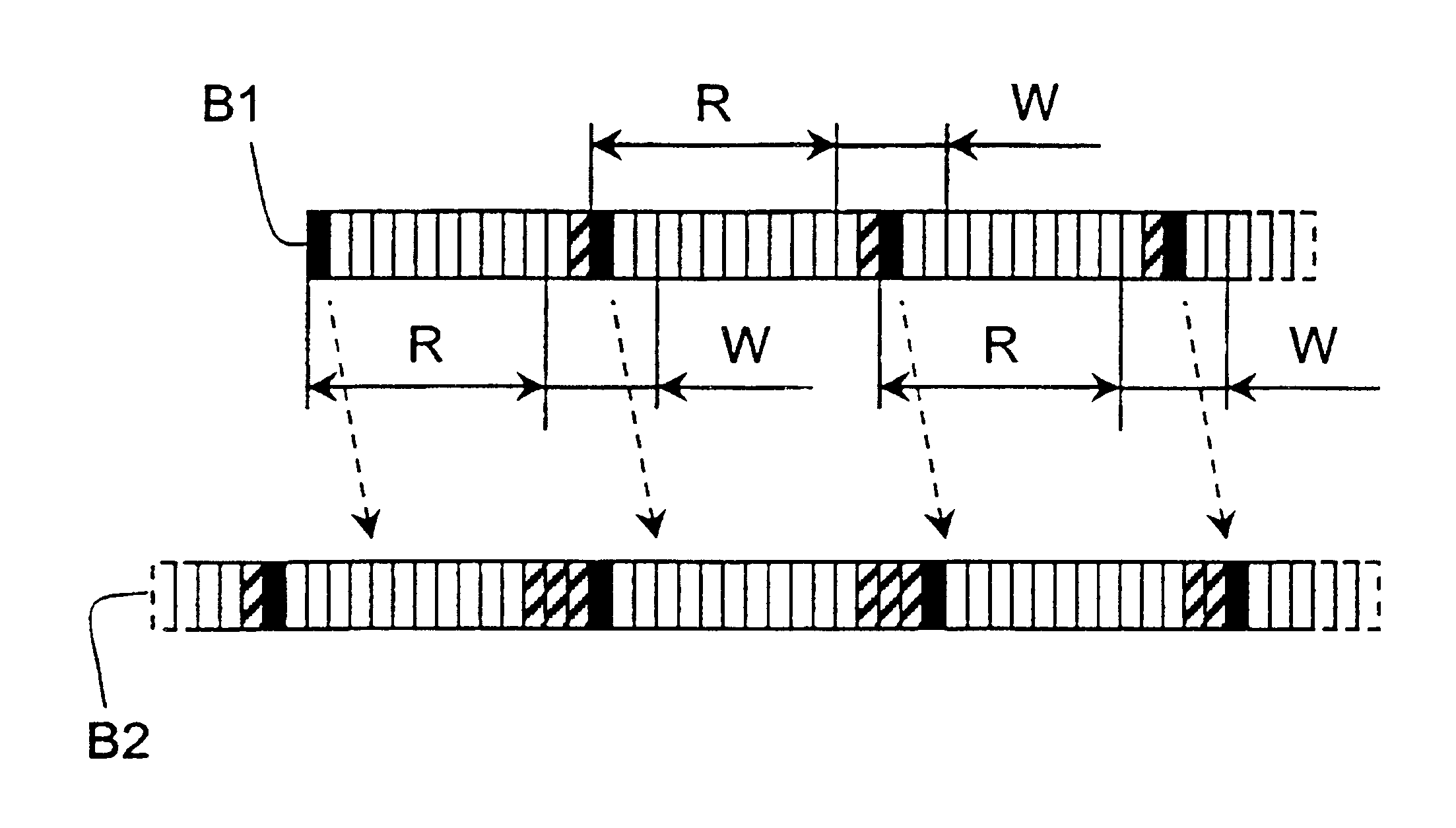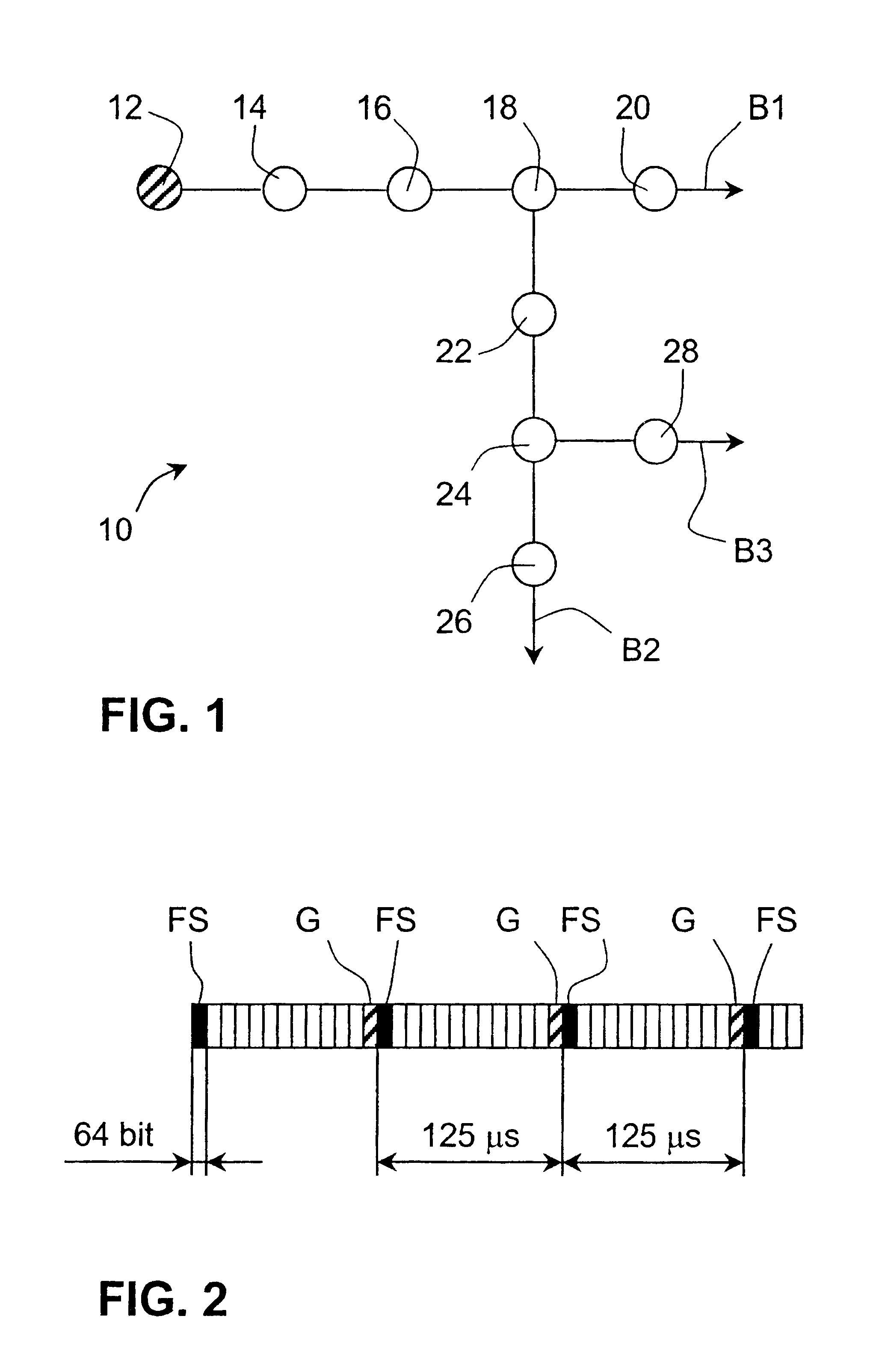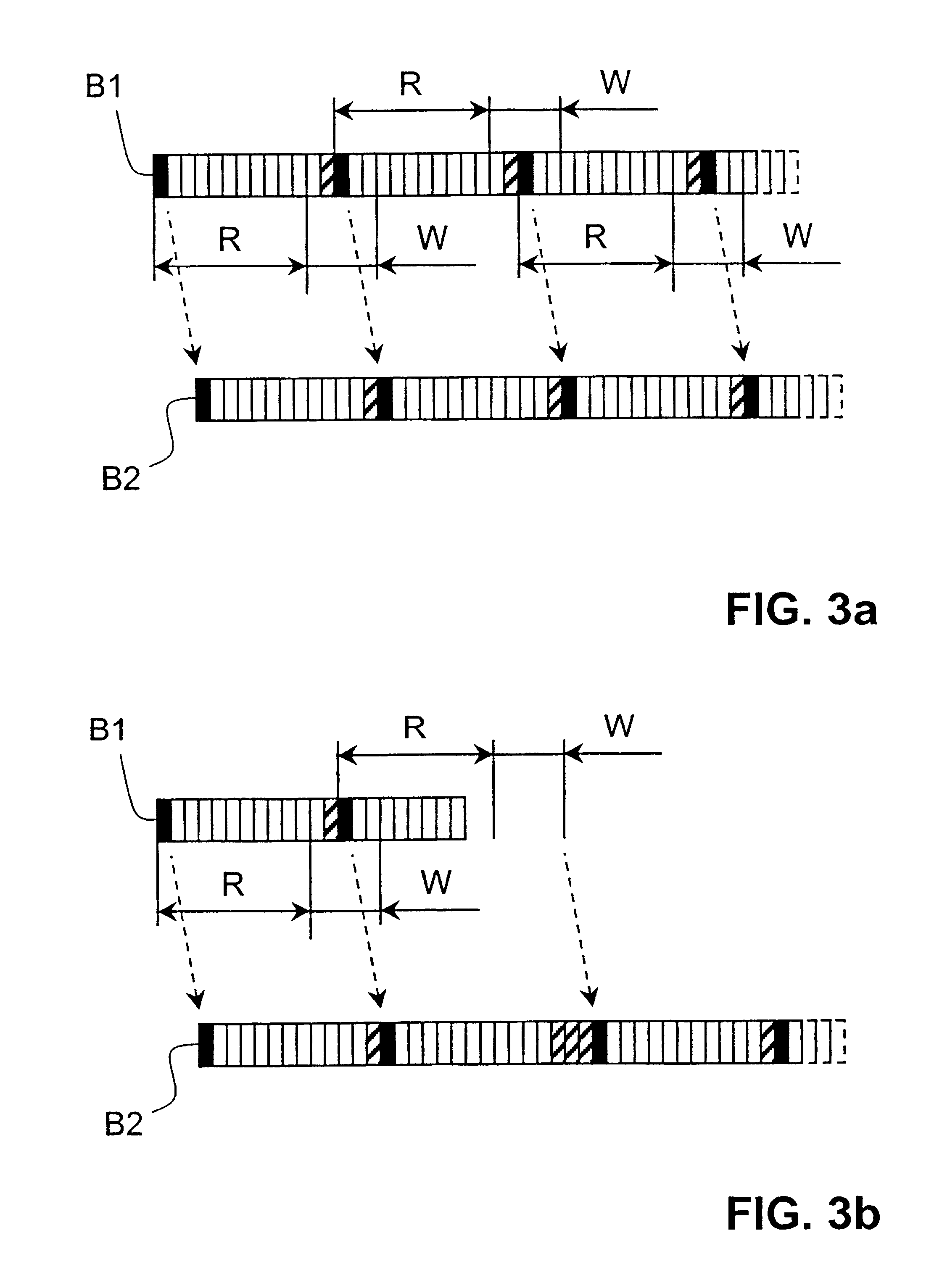Methods and apparatuses for providing synchronization in a communication network
a communication network and communication network technology, applied in the direction of time division multiplexing selection, transmission, synchronous/start-stop systems, etc., can solve the problems of network synchronization consequently stopping, communication may stop functioning, and the schedule has a drawback
- Summary
- Abstract
- Description
- Claims
- Application Information
AI Technical Summary
Benefits of technology
Problems solved by technology
Method used
Image
Examples
Embodiment Construction
A network 10 operating according to an embodiment of the invention will now be describe with reference to FIG. 1. The network section shown in FIG. 1 includes three bitstreams B1, B2, and B3 propagating in the directions indicated by arrows in the figure and transferring data between nodes 12-28 of the network. An example of the structure of each one of the bitstreams in FIG. 1 will be described below with reference to FIG. 2. In the network section of FIG. 1, nodes 12, 14, 16, 18, and 20 are connected to bitstream B1, nodes 18, 22, 24, and 26 are connected to bitstream B2, and nodes 24 and 28 are connected to bitstream B3. Each node typically provides end users connected to the respective node with access to the network bitstreams. In order to communicate with other nodes, a node will transmit data into, or read data from, allocated time slots of the bitstream concerned. If a node on a first bitstream, for example node 14 on bitstream B1, wishes to transmit data to a node on anothe...
PUM
 Login to View More
Login to View More Abstract
Description
Claims
Application Information
 Login to View More
Login to View More - R&D
- Intellectual Property
- Life Sciences
- Materials
- Tech Scout
- Unparalleled Data Quality
- Higher Quality Content
- 60% Fewer Hallucinations
Browse by: Latest US Patents, China's latest patents, Technical Efficacy Thesaurus, Application Domain, Technology Topic, Popular Technical Reports.
© 2025 PatSnap. All rights reserved.Legal|Privacy policy|Modern Slavery Act Transparency Statement|Sitemap|About US| Contact US: help@patsnap.com



